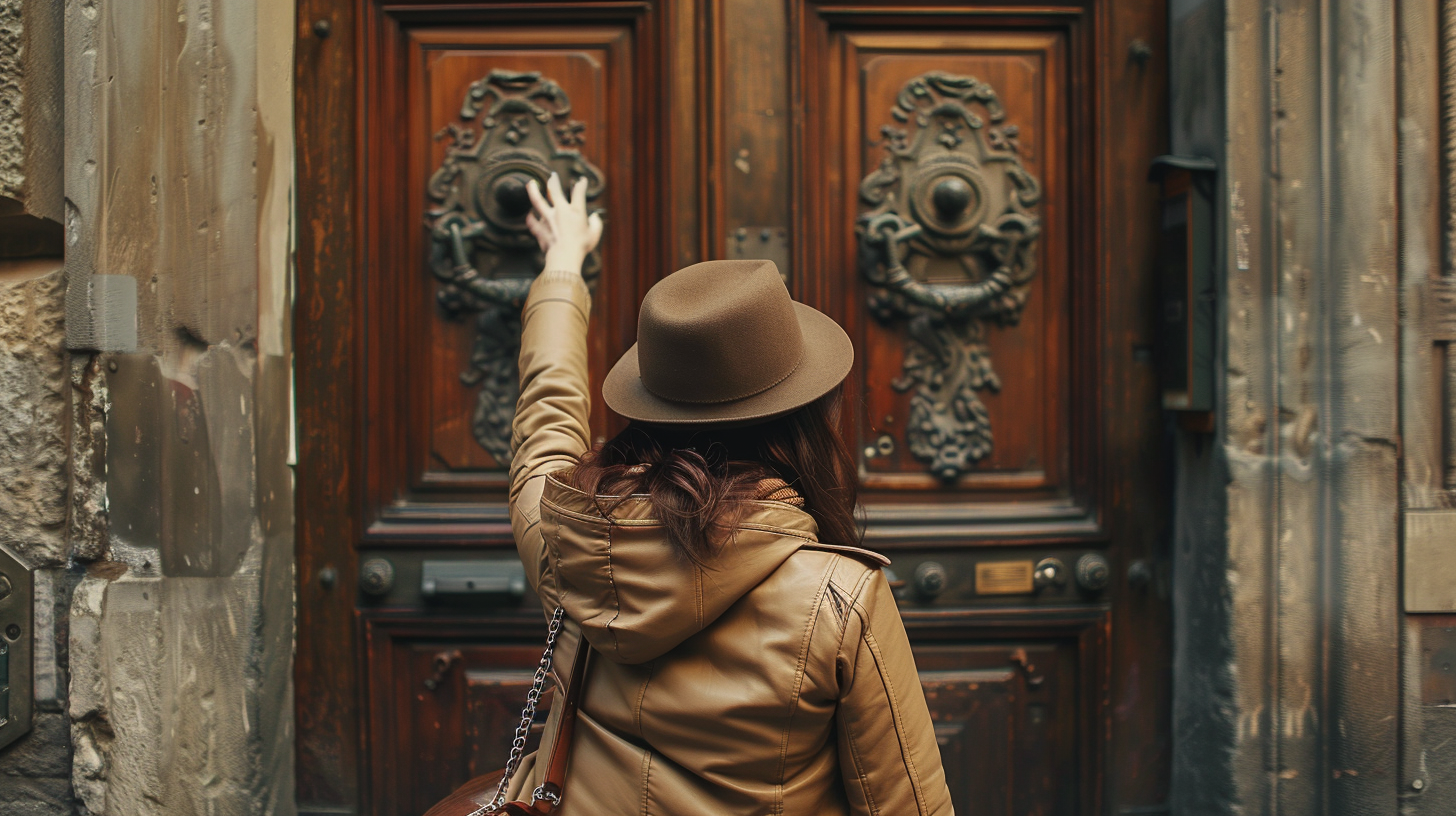The Secret Grammar of Door Knockers: Reading Florence One Knock at a Time
Florence is a city that expects you to look closely. Not at the fresco everyone photographs, but two feet to the left—where a bronze lion’s mouth guards an oak door, or a polished hand curls into a knock that once announced a life. Door knockers here are more than hardware; they’re a social code cast in metal, a grammar of thresholds. Learn to read them, and the streets begin to speak.
Knocking on palazzo door
A Short History of the Knock
Before buzzers and aloof intercoms, the knocker was a civic handshake. It mediated between public and private—firm enough to carry a message down a corridor, refined enough to say, we have standards. In Renaissance Florence, the object did both: it solved a practical problem and made a visual argument about taste, status, and the household’s sense of itself.
The Florentine Lexicon: Forms You’ll Meet
Lions (Authority & Vigilance). A favorite of families who fancied themselves stewards of order. The ring through the jaw suggests power under control—a promise that rules apply here, and apply beautifully.
Hands (Polite Domesticity). A feminine hand, often with a ruffled cuff or a ring, implies hospitality with boundaries: welcome, but don’t break the spell.
Bestiary & Grotesques (Wit & Warnings). Dolphins, satyrs, mascarons: humor as a lock. These pieces control the mood at the threshold—delight with a subtext that says, mind your manners.
Heraldic Shields (Pedigree). Blazons and initials turn the act of knocking into a nod at lineage. A door that doubles as a calling card.
Geometric Knockers (Modern Severity). Later centuries introduced circles, squares, and fluted bosses—less narrative, more attitude. Minimalism, Florentine edition.
Material Matters
Bronze ages into a low, intelligent green; brass keeps its polite gleam if someone cares enough to polish it; iron wears time like a leather jacket. Patina is not decay here—it’s authorship. Each touch writes a note in the surface, and the object becomes a ledger of arrivals and departures.
How to “Read” a Door in 30 Seconds
Scan the Composition. Is the knocker centered, paired, or offset to balance a peephole, a mail slot, a saint’s plaque?
Note the Scale. Oversized pieces project confidence; small, precise ones whisper old money.
Check the Plate. Backplates can echo the façade’s moldings—mini-architecture in metal.
Observe Wear Patterns. Bright spots betray favorite contact points; a knocker with a polished lower lip means decades of practiced grace.
Streets as a Syllabus
Oltrarno (Santo Spirito, San Frediano): Workshops and witty grotesques—playful forms with artisan fingerprints.
Santa Croce: Lions and mascarons with rhetorical flair; a neighborhood that loves a good entrance.
Via Tornabuoni & Environs: Heraldic restraint. The jewelry district, appropriately.
Back lanes near the Duomo: Old iron with beautiful fatigue—proof that elegance survives routine.
Etiquette for the Attentive Traveler
Look, don’t rattle. Photograph with restraint and catch the side light—morning or late afternoon, when bronze and brass perform their best chiaroscuro. If someone steps out, offer a smile and a “buongiorno.” You’re admiring their threshold, after all.
From Threshold to Bottega
Door knockers are persuasion in metal, cousins to the artisan signs and gilded lettering that still mark real workshops. If the knocker is good, the neighborhood usually is too. Follow the clue: a well-made object on a door often leads to well-made objects inside a shop around the corner.
Practical Mini-Guide
What to look for: expressive mouths, elegant hands, lively backplates, honest wear.
Best light: golden hour—Florence turns every metal into theatre.
Pair it with: a detour to an artisan hardware shop or a foundry demo if you can find one open.
Florence Factory’s Take
We love knockers because they’re everyday masterpieces—a handshake you can’t miss. Our curation follows the same logic: materials that age well, forms with purpose, beauty that works for a living.

